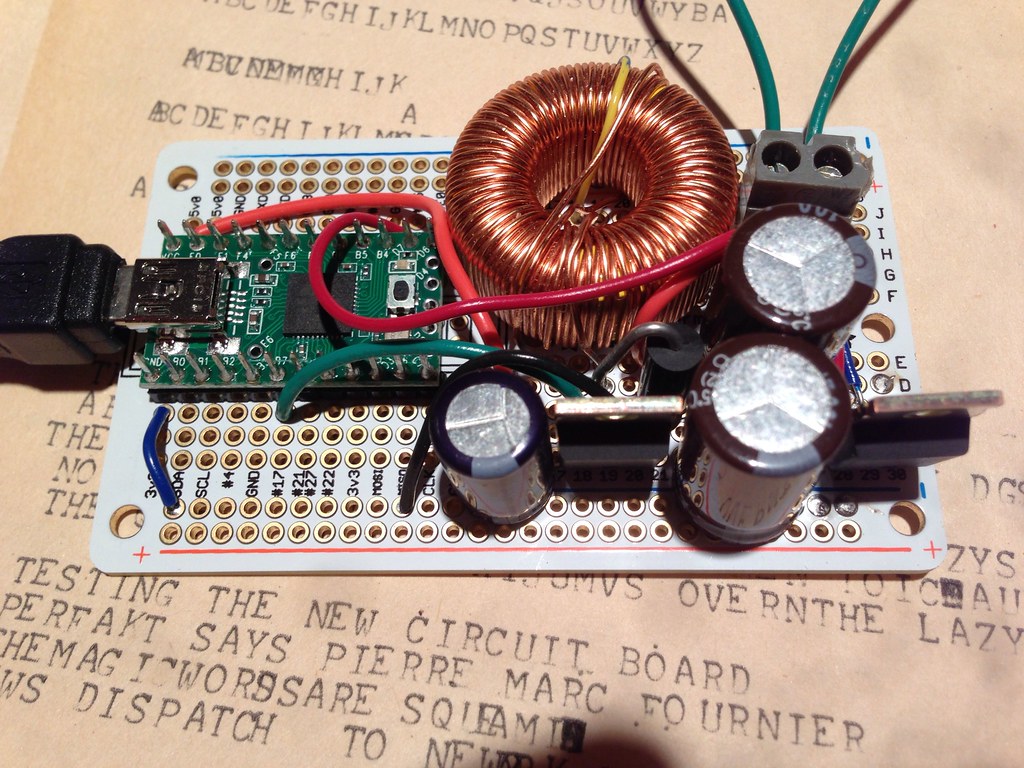 There are two complications with interfacing a teletype to a modern computer. The first is the slow 45.5 bit baud rate and the non-ASCII 5-bit Baudot code. The second is that it is necessary to step up the voltage to around 100V to overcome the (approximately) 4 Henries of the selector magnet, while supplying 60mA to the current loop.
There are two complications with interfacing a teletype to a modern computer. The first is the slow 45.5 bit baud rate and the non-ASCII 5-bit Baudot code. The second is that it is necessary to step up the voltage to around 100V to overcome the (approximately) 4 Henries of the selector magnet, while supplying 60mA to the current loop.
The slow baud rate and format conversion is easy to do with a microcontroller like the Teensy, which can act as a normal USB serial device to allow operation with no special drivers on the host computer. It has a lookup table for the supported characters and maintains a state of which figure/letter rail is currently selected.
The roughly 5W power requirements of the coil are just within the voltage and current range allowed from a USB port as well. This design uses a boost converter to step up the 5V to approximately 100 V and is based on the Adafruit DC/DC boost calculator. The Teensy generates the PWM signal to drive the charge pump, but doesn't use any feedback to keep the circuit and software simple.
The prototype in the top image uses a random inductor that is "big", but my second version uses a RLB9012-101KL 100mH high current coil. The IRF740 are higher current than necessary; IRF710 are suitable replacements.
The source code for the teletype interface board: https://bitbucket.org/hudson/teletype/
 Support for KSR models is now in functional with a simple 5V current loop. The 5-bit Baudot code and current input mode (Letters/Figures) are translated into ASCII. See it in action!
Support for KSR models is now in functional with a simple 5V current loop. The 5-bit Baudot code and current input mode (Letters/Figures) are translated into ASCII. See it in action!
Circuits Baudot Retrocomputing Teletype Teensy 2013
